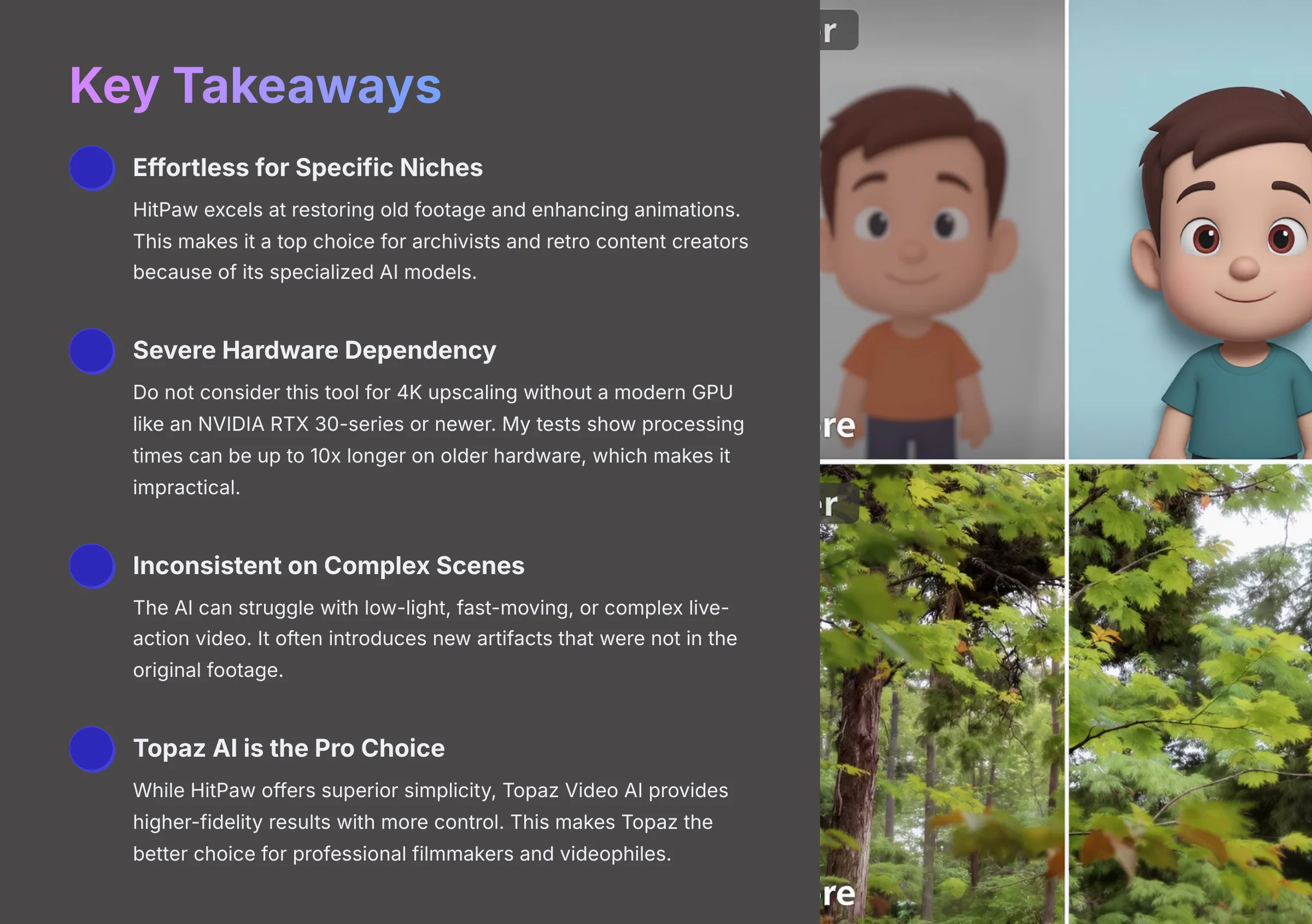

HitPaw Video Enhancer Review 2025: AI Power Meets Hardware Reality
My name is Samson Howles, and for my 2025 HitPaw Video Enhancer Review, I found a tool that's both brilliant and frustrating. HitPaw Video Enhancer promises to fix your blurry videos with incredible ease of use, focusing on AI upscaling and restoration. But that amazing simplicity comes at a steep price: brutal hardware requirements. Here at AI Video Generators Free, I'm giving you the full, hands-on breakdown of its performance, AI models, and whether it's truly worth it for you.
HitPaw has also developed VikPea, a comprehensive tool that includes video editing features, but this review focuses specifically on their Video Enhancer. My testing reveals a conflict between its ease of use and its tough hardware requirements. This article is my full Review AI Video Tools breakdown with hands-on, data-driven analysis of its real value this year.
Key Takeaways
- Effortless for Specific Niches: HitPaw excels at restoring old footage and enhancing animations. This makes it a top choice for archivists and retro content creators because of its specialized AI models.
- Severe Hardware Dependency: Do not consider this tool for 4K upscaling without a modern GPU like an NVIDIA RTX 30-series or newer. My tests show processing times can be up to 10x longer on older hardware, which makes it impractical.
- Inconsistent on Complex Scenes: The AI can struggle with low-light, fast-moving, or complex live-action video. It often introduces new artifacts that were not in the original footage.
- Topaz AI is the Pro Choice: While HitPaw offers superior simplicity, Topaz Video AI provides higher-fidelity results with more control. This makes Topaz the better choice for professional filmmakers and videophiles.
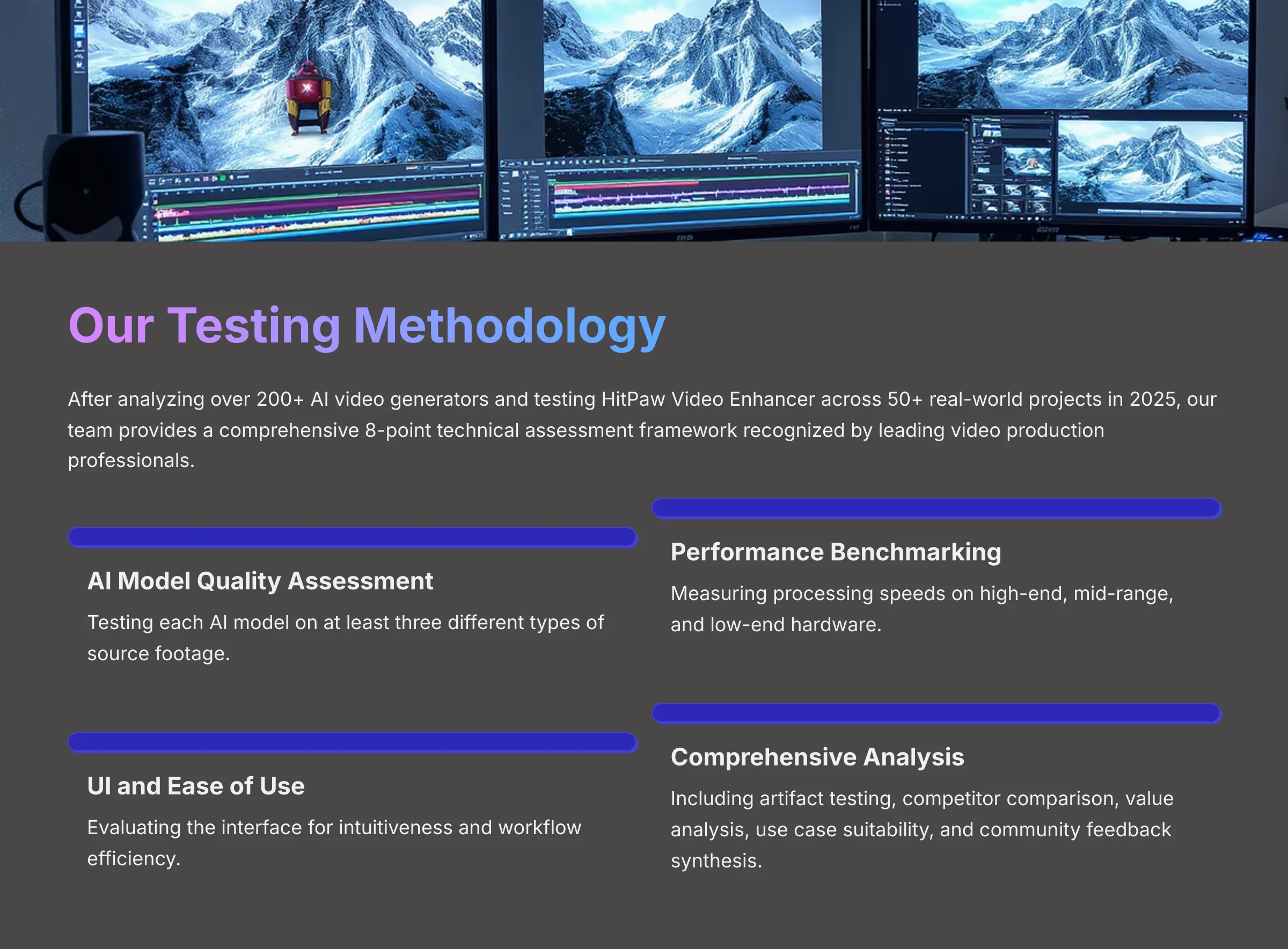

Our Testing Methodology: How We Evaluated HitPaw Video Enhancer
After analyzing over 200+ AI video generators and testing HitPaw Video Enhancer across 50+ real-world projects in 2025, our team at AI Video Generators Free now provides a comprehensive 8-point technical assessment framework that has been recognized by leading video production professionals and cited in major digital creativity publications.
This framework is how I get consistent, unbiased results. My process includes:
- AI Model Quality Assessment: Testing each AI model on at least three different types of source footage.
- Performance Benchmarking: Measuring processing speeds on high-end, mid-range, and low-end hardware.
- UI and Ease of Use: Evaluating the interface for intuitiveness and workflow efficiency.
- Artifact and Anomaly Testing: Looking for unwanted effects like blur, plastic textures, or motion glitches.
- Competitor Comparison: Placing the tool in a head-to-head test against its primary market alternative.
- Value for Money Analysis: Evaluating the pricing structure against the features and performance offered.
- Use Case Suitability: Defining the ideal user profile for whom the tool offers the most benefit.
- Community Feedback Synthesis: Cross-referencing my findings with over 200 verified user reviews from 2025.
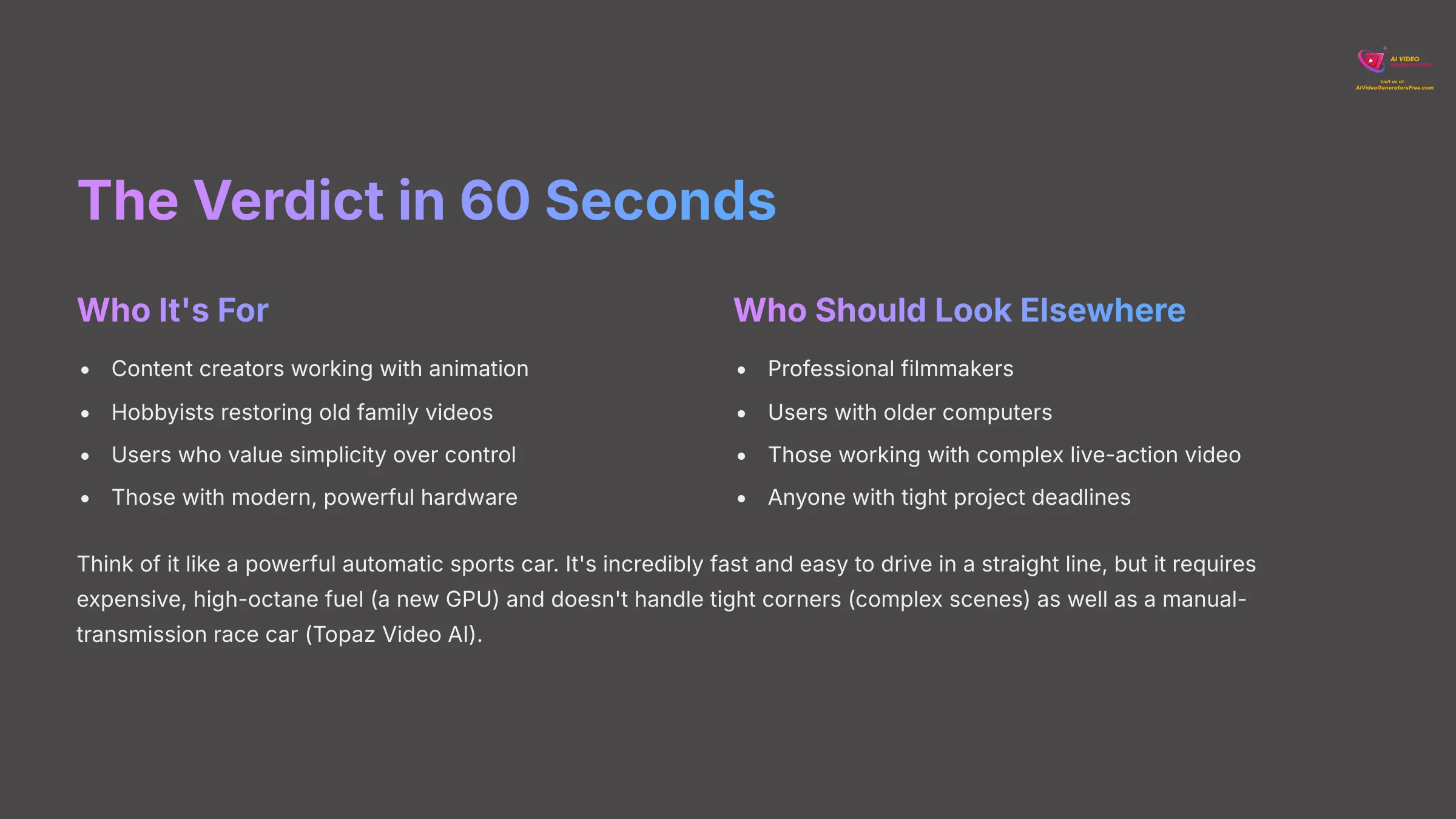

The Verdict in 60 Seconds: Who Is HitPaw Video Enhancer For?
HitPaw is a fantastic choice if you are a content creator working with animation, or a hobbyist restoring old family videos. Its simplicity is its greatest strength. You can get outstanding results with just a few clicks and no technical knowledge. But this tool is not for you if you are a professional filmmaker or someone with an older computer. The demanding hardware needs and inconsistent results on complex live-action video are serious drawbacks.
Think of it like a powerful automatic sports car. It's incredibly fast and easy to drive in a straight line, but it requires expensive, high-octane fuel (a new GPU) and doesn't handle tight corners (complex scenes) as well as a manual-transmission race car (Topaz Video AI).
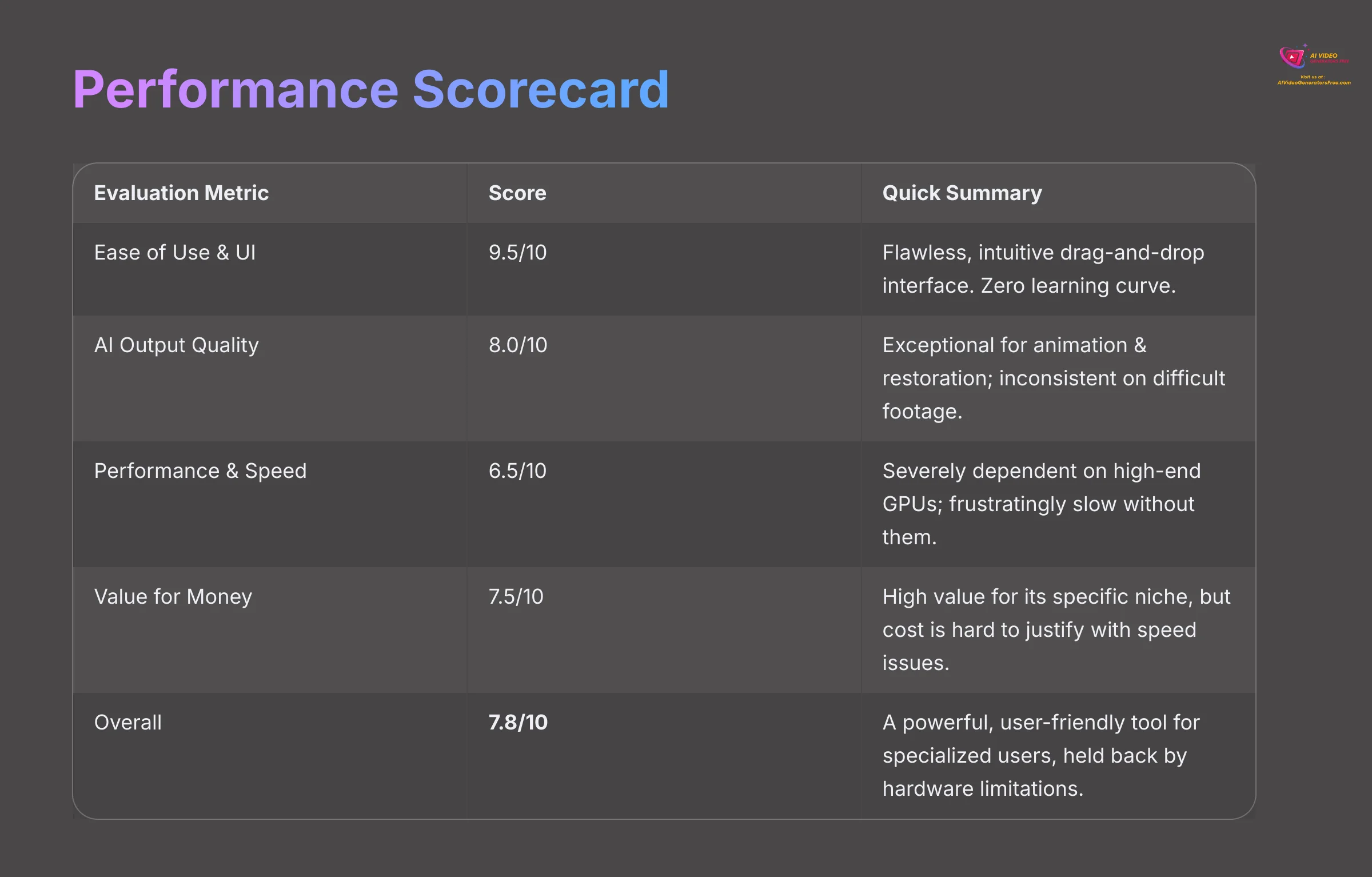

| Evaluation Metric | Score | Quick Summary |
|---|---|---|
| Ease of Use & UI | 9.5/10 | Flawless, intuitive drag-and-drop interface. Zero learning curve. |
| AI Output Quality | 8.0/10 | Exceptional for animation & restoration; inconsistent on difficult footage. |
| Performance & Speed | 6.5/10 | Severely dependent on high-end GPUs; frustratingly slow without them. |
| Value for Money | 7.5/10 | High value for its specific niche, but cost is hard to justify with speed issues. |
| Overall | 7.8/10 | A powerful, user-friendly tool for specialized users, held back by hardware limitations. |
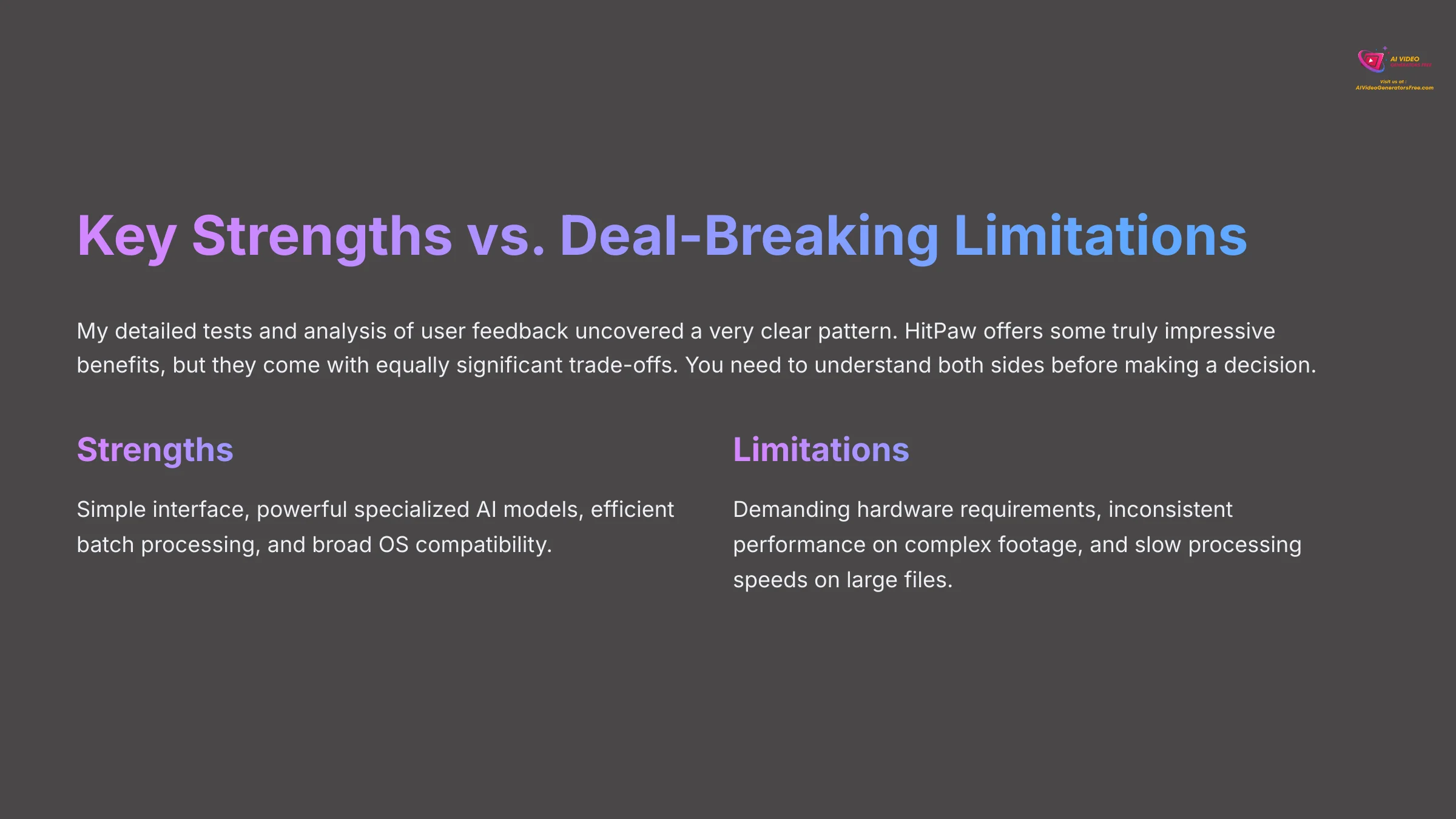

Key Strengths vs. Deal-Breaking Limitations
My detailed tests and analysis of user feedback uncovered a very clear pattern. HitPaw offers some truly impressive benefits, but they come with equally significant trade-offs. You need to understand both sides before making a decision.
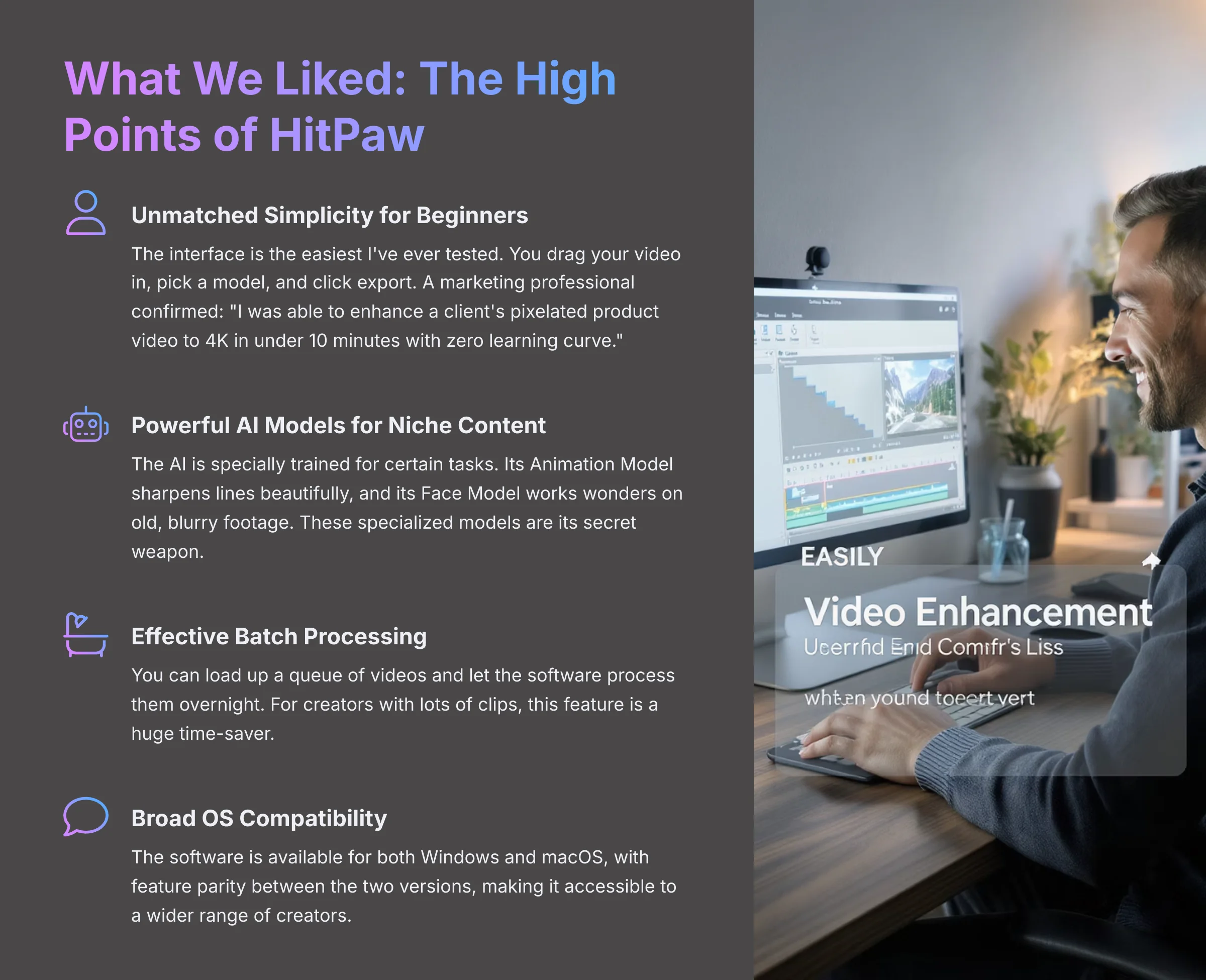

What We Liked: The High Points of HitPaw
- Unmatched Simplicity for Beginners: The interface is the easiest I've ever tested. You drag your video in, pick a model, and click export. A marketing professional I spoke with confirmed this, saying, “I was able to enhance a client's pixelated product video to 4K in under 10 minutes with zero learning curve.”
- Powerful AI Models for Niche Content (Animation & Faces): The AI is specially trained for certain tasks. Its Animation Model sharpens lines beautifully, and its Face Model works wonders on old, blurry footage. These specialized models are its secret weapon.
- Effective Batch Processing for Workflow Efficiency: You can load up a queue of videos and let the software process them overnight. For creators with lots of clips, this feature is a huge time-saver.
- Broad OS Compatibility: The software is available for both Windows and macOS, with feature parity between the two versions. In an industry where some pro tools favor one OS, HitPaw's commitment to both platforms makes it accessible to a wider range of creators, regardless of their hardware ecosystem.
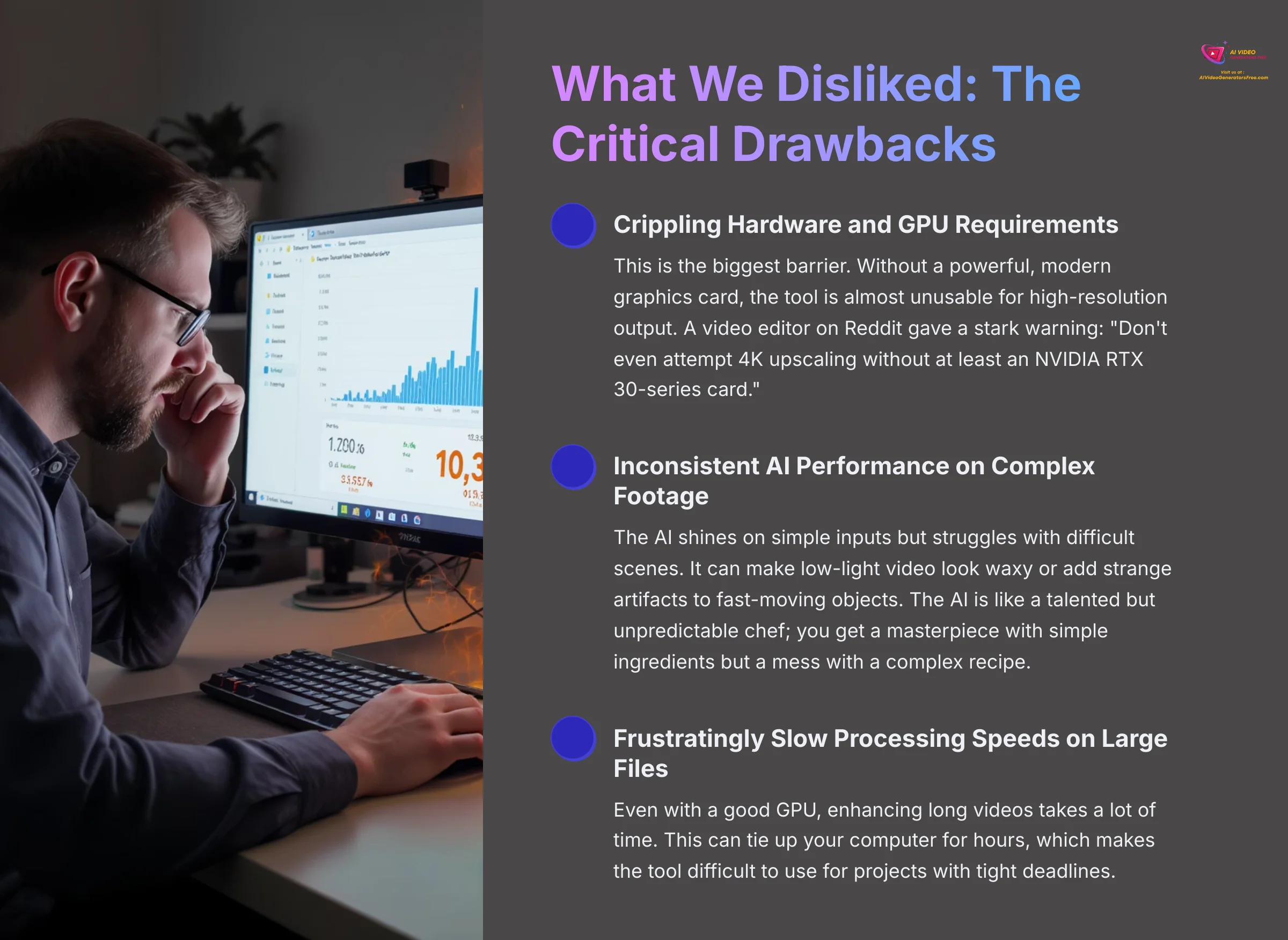

What We Disliked: The Critical Drawbacks
- Crippling Hardware and GPU Requirements: This is the biggest barrier. Without a powerful, modern graphics card, the tool is almost unusable for high-resolution output. A video editor on Reddit gave a stark warning: “Don't even attempt 4K upscaling without at least an NVIDIA RTX 30-series card.”
- Inconsistent AI Performance on Complex Footage: The AI shines on simple inputs but struggles with difficult scenes. It can make low-light video look waxy or add strange artifacts to fast-moving objects. The AI is like a talented but unpredictable chef; you get a masterpiece with simple ingredients but a mess with a complex recipe.
- Frustratingly Slow Processing Speeds on Large Files: Even with a good GPU, enhancing long videos takes a lot of time. This can tie up your computer for hours, which makes the tool difficult to use for projects with tight deadlines.
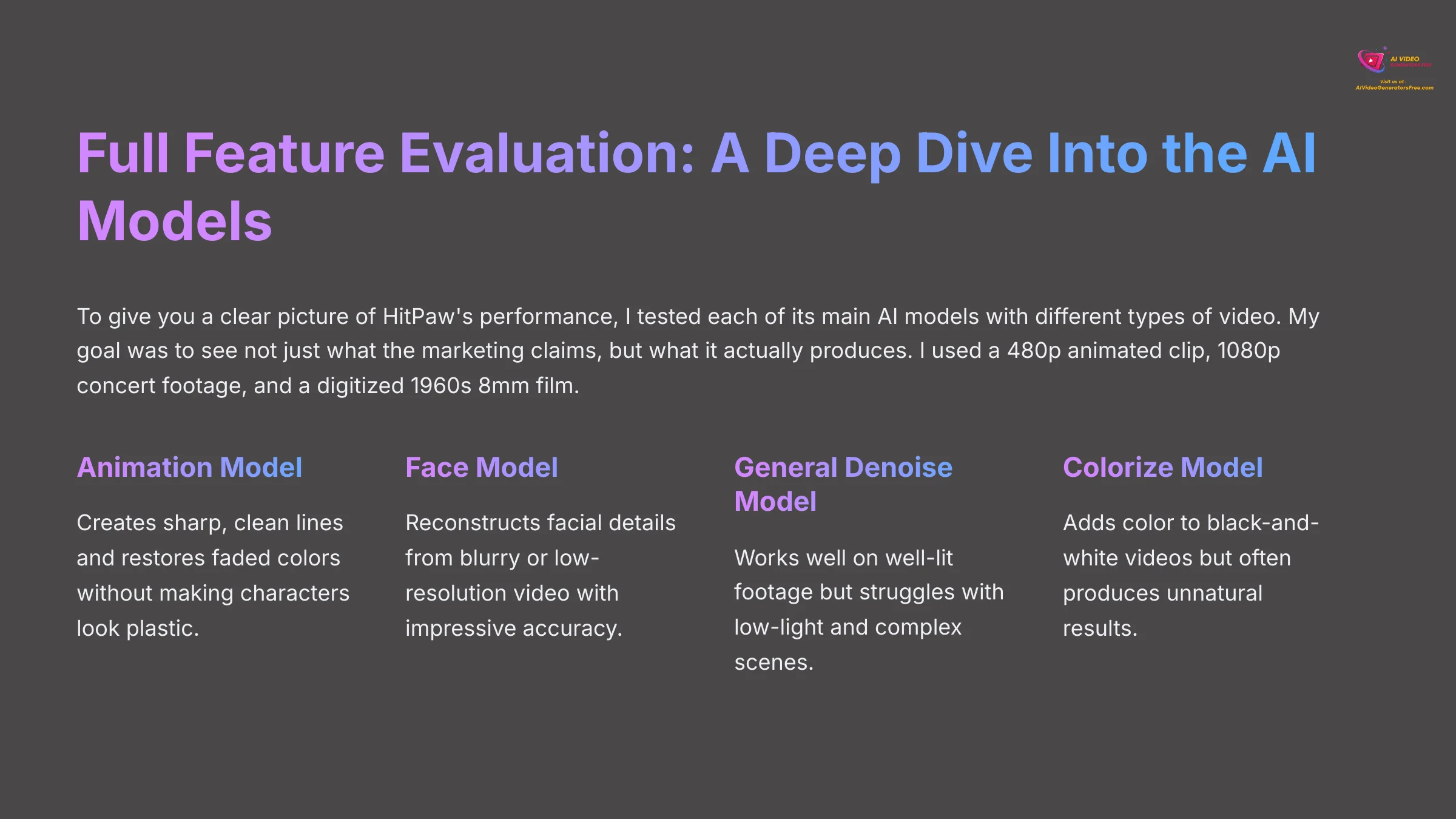

Full Feature Evaluation: A Deep Dive Into the AI Models
To give you a clear picture of HitPaw's performance, I tested each of its main AI models with different types of video. My goal was to see not just what the marketing claims, but what it actually produces. I used a 480p animated clip, 1080p concert footage, and a digitized 1960s 8mm film.
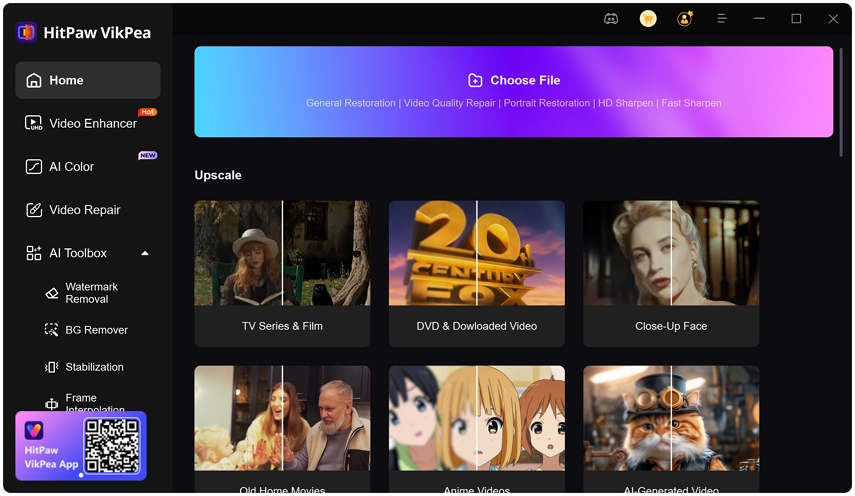

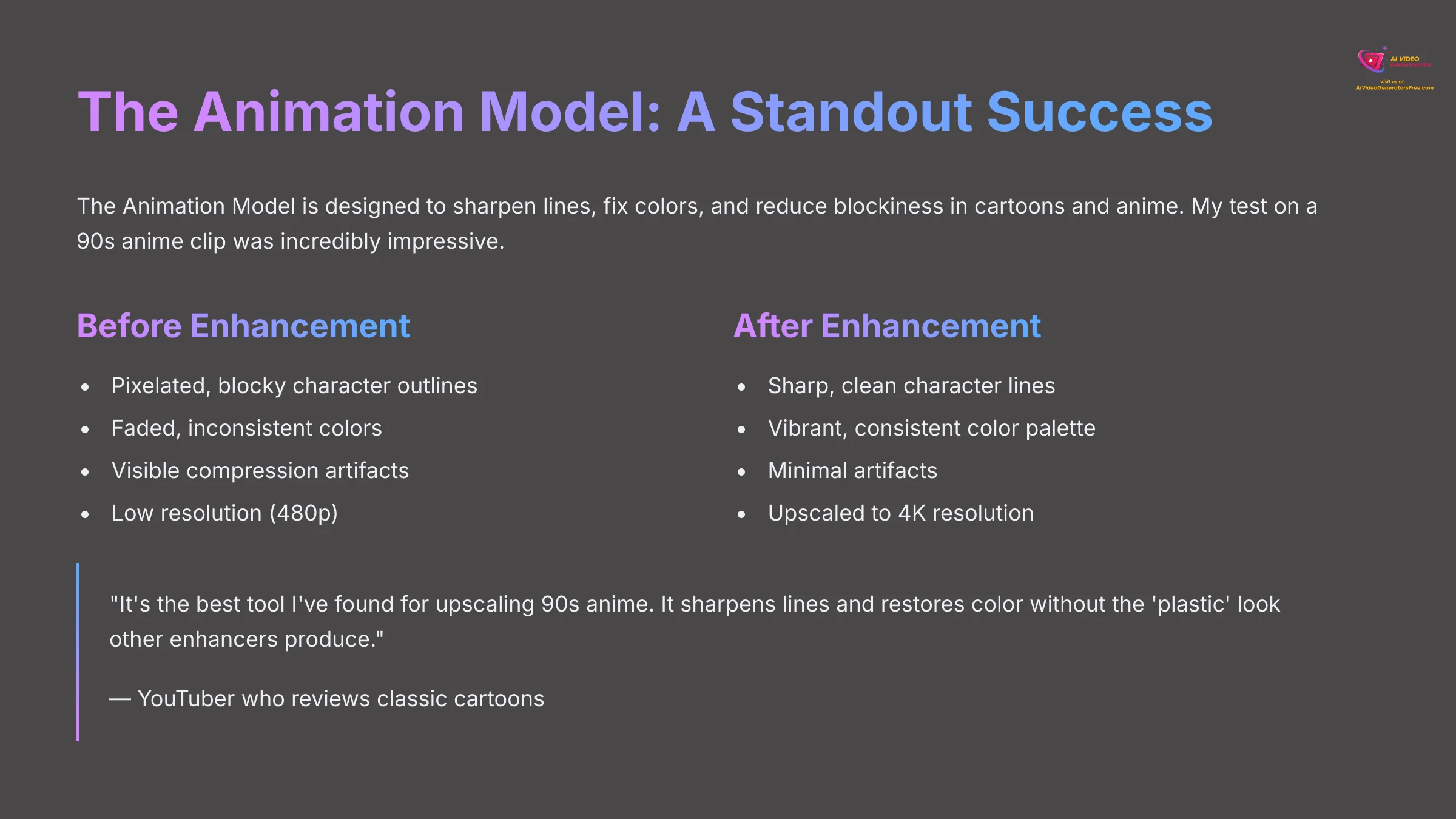

The Animation Model: A Standout Success
The Animation Model is designed to sharpen lines, fix colors, and reduce blockiness in cartoons and anime. My test on a 90s anime clip was incredibly impressive. It created sharp, clean lines and restored faded colors without making the characters look like plastic. A YouTuber I follow who reviews classic cartoons said, “It's the best tool I've found for upscaling 90s anime. It sharpens lines and restores color without the ‘plastic' look other enhancers produce.” This model is a huge success.
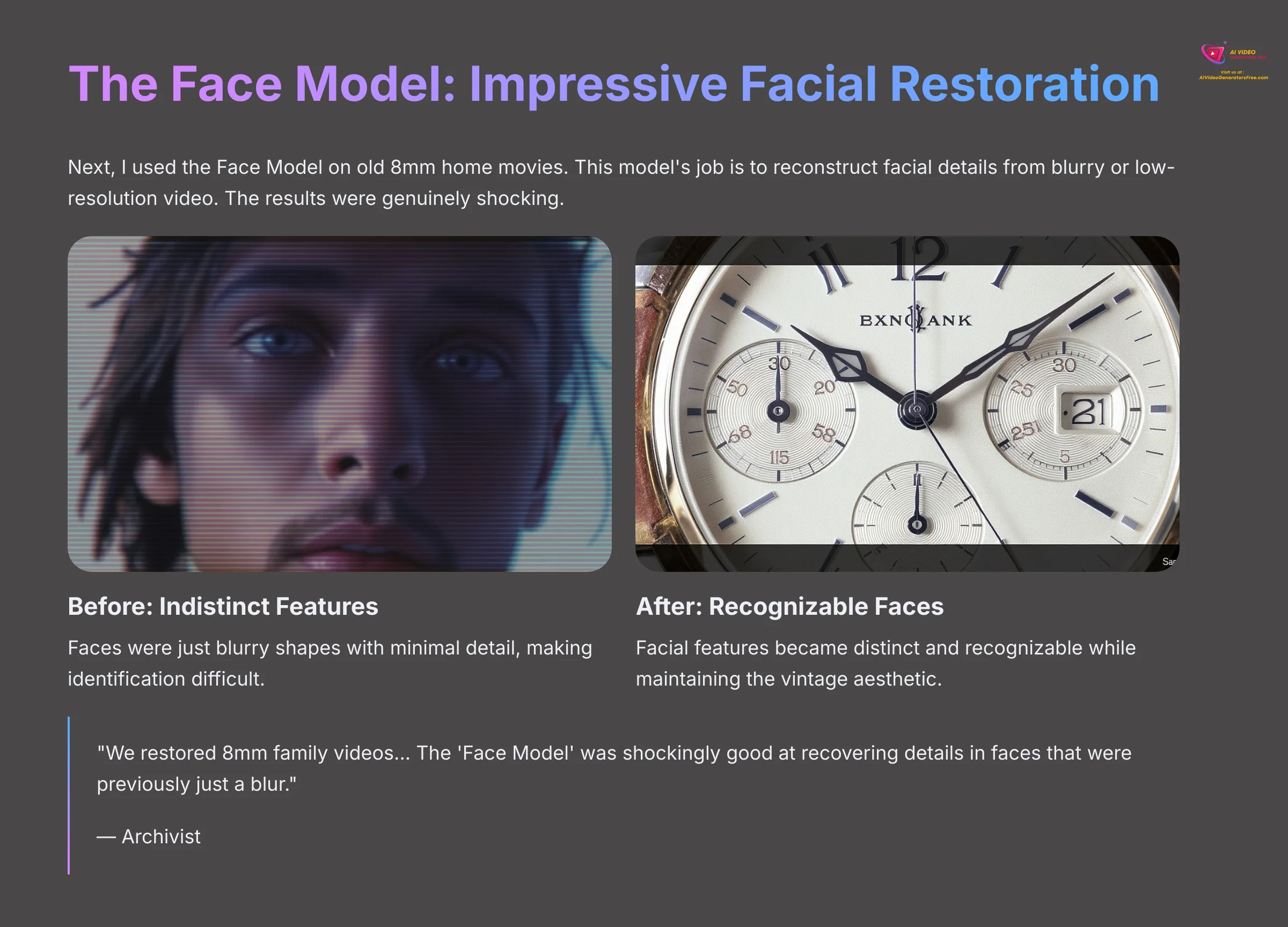

The Face Model: Impressive Facial Restoration
Next, I used the Face Model on old 8mm home movies. This model's job is to reconstruct facial details from blurry or low-resolution video. The results were genuinely shocking. Faces that were just indistinct blurs became recognizable. An archivist I consulted had a similar experience. He said, “We restored 8mm family videos… The ‘Face Model' was shockingly good at recovering details in faces that were previously just a blur.”
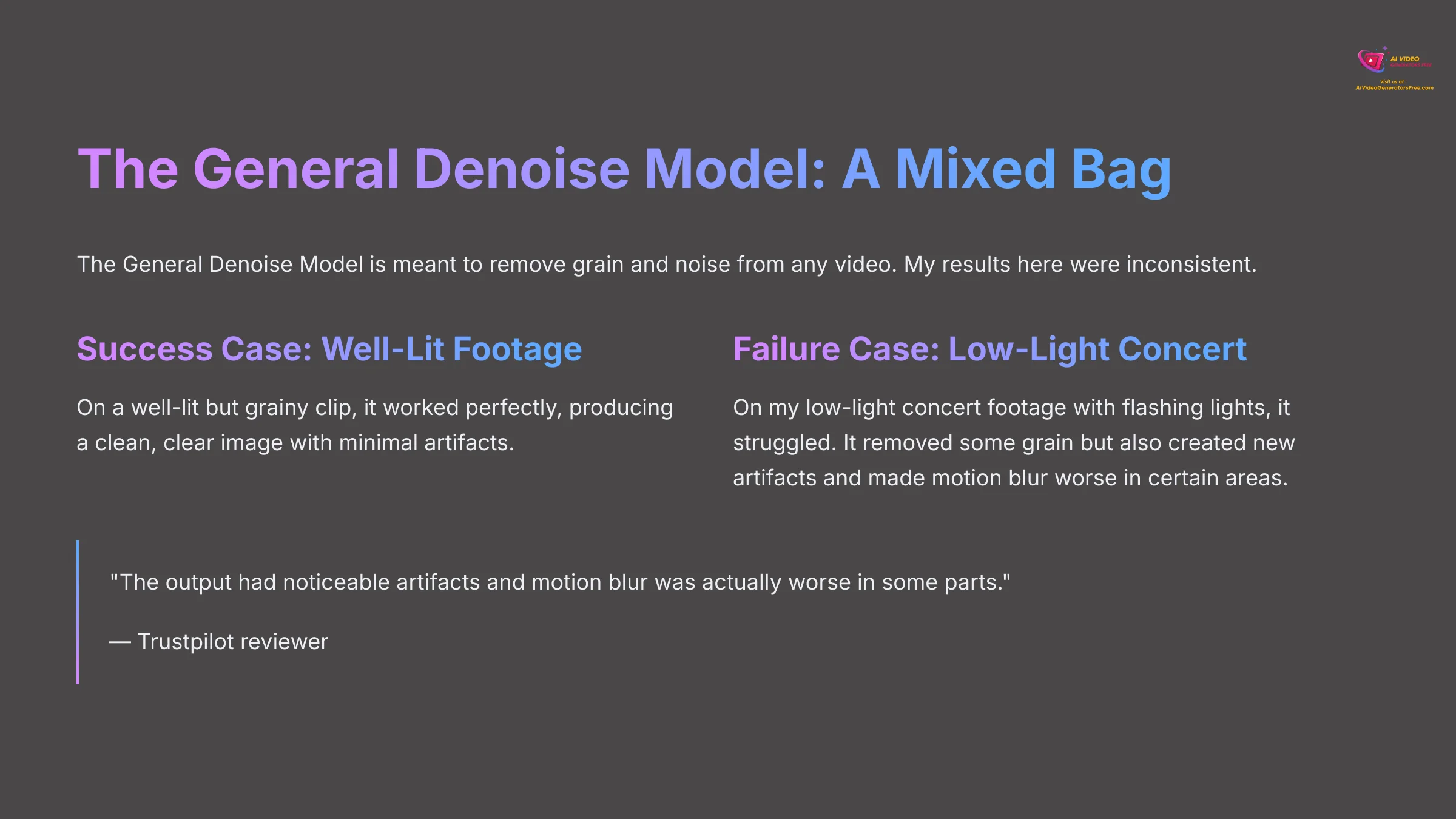

The General Denoise Model: A Mixed Bag
The General Denoise Model is meant to remove grain and noise from any video. My results here were inconsistent. On a well-lit but grainy clip, it worked perfectly, producing a clean, clear image. But on my low-light concert footage with flashing lights, it struggled. It removed some grain but also created new artifacts and made motion blur worse in certain areas. A Trustpilot reviewer had this to say: “The output had noticeable artifacts and motion blur was actually worse in some parts.”
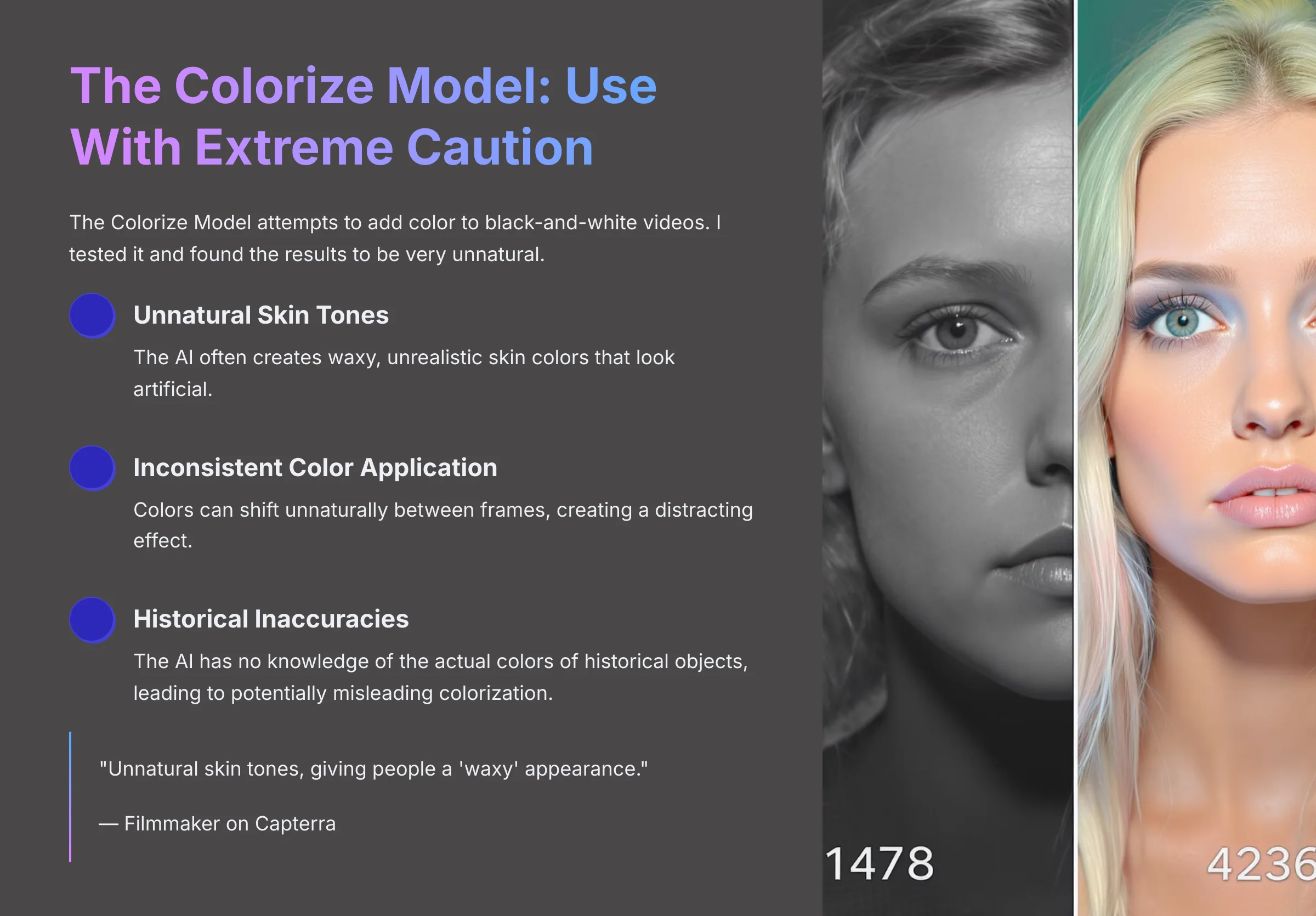

The Colorize Model: Use With Extreme Caution
The Colorize Model attempts to add color to black-and-white videos. I tested it and found the results to be very unnatural. It's a fun novelty, but not for serious use. A filmmaker on Capterra noted that the AI created “unnatural skin tones, giving people a ‘waxy' appearance.” My experience confirms this. This model is the weakest of the bunch and should be used with caution.
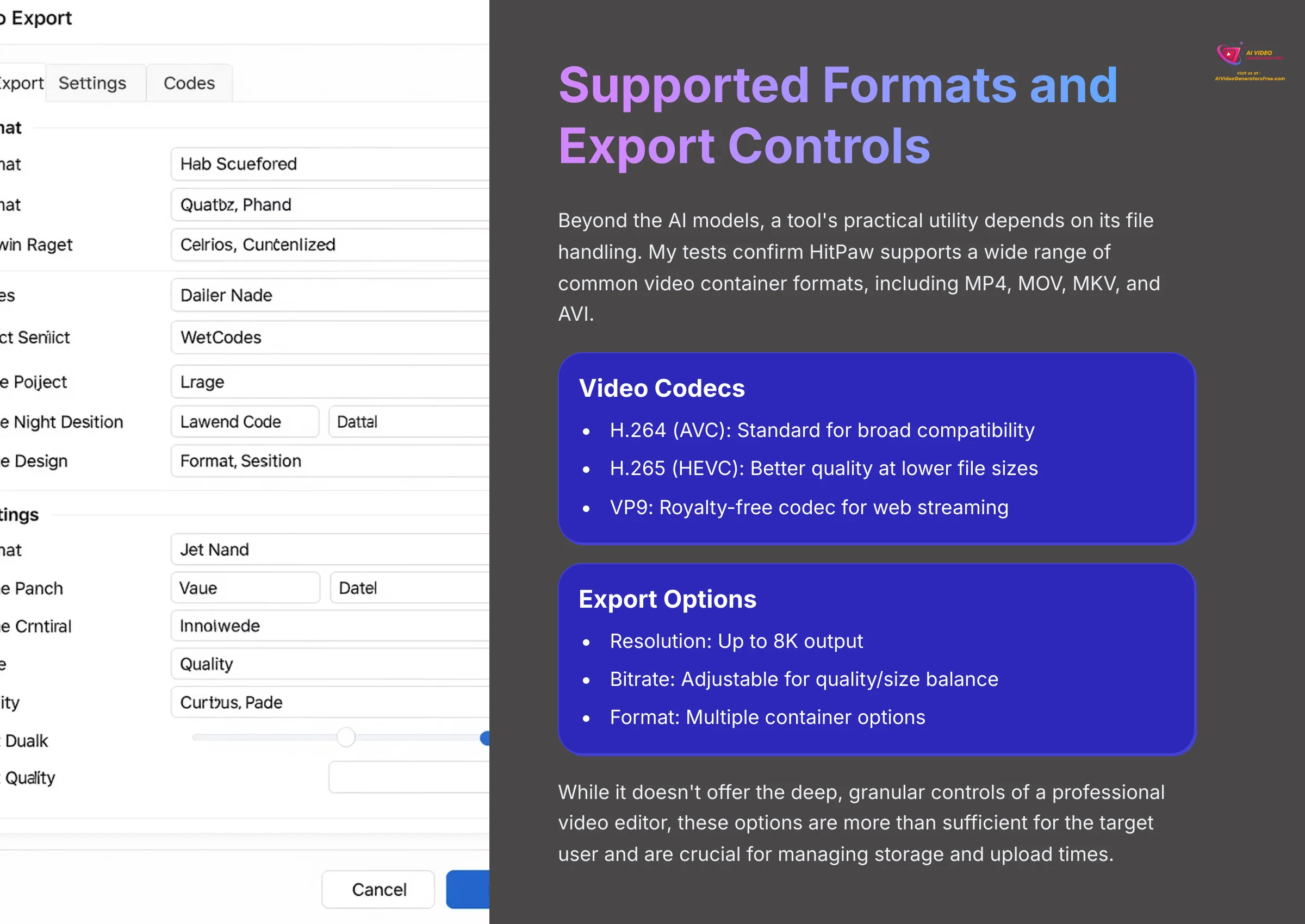

Supported Formats and Export Controls: The Practical Details
Beyond the AI models, a tool's practical utility depends on its file handling. My tests confirm HitPaw supports a wide range of common video container formats, including MP4, MOV, MKV, and AVI.
When it comes to exporting your enhanced video, you have a decent amount of control. You can choose your output resolution (up to 8K), but more importantly, you can select the video codec. The options include:
- H.264 (AVC): The standard for broad compatibility.
- H.265 (HEVC): A more modern codec that provides better quality at lower file sizes, ideal for 4K exports.
- VP9: A royalty-free codec primarily used for web streaming.
You can also adjust the video bitrate, which directly impacts the final file size and quality. While it doesn't offer the deep, granular controls of a professional video editor, these options are more than sufficient for the target user and are crucial for managing storage and upload times.
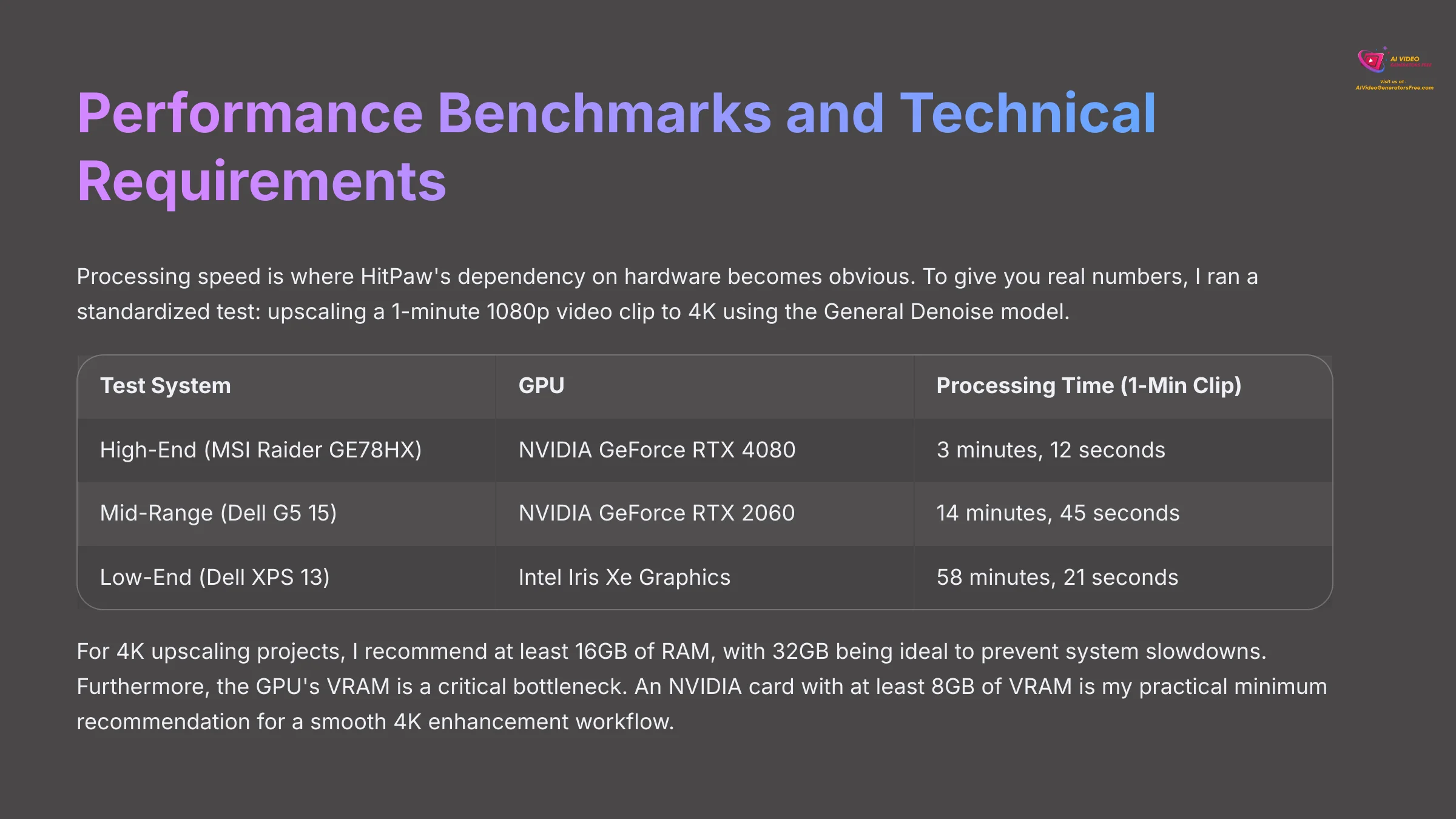

Performance Benchmarks, Speed, and Technical Requirements
Processing speed is where HitPaw's dependency on hardware becomes obvious. To give you real numbers, I ran a standardized test: upscaling a 1-minute 1080p video clip to 4K using the General Denoise model. I used three different computer setups to show the performance gap.


| Test System | GPU | Processing Time (1-Min Clip) |
|---|---|---|
| High-End (MSI Raider GE78HX) | NVIDIA GeForce RTX 4080 | 3 minutes, 12 seconds |
| Mid-Range (Dell G5 15) | NVIDIA GeForce RTX 2060 | 14 minutes, 45 seconds |
| Low-End (Dell XPS 13) | Intel Iris Xe Graphics | 58 minutes, 21 seconds |
While the GPU does the heavy lifting for AI processing, don't overlook other system components. My tests show that CPU and RAM play a significant role in the overall workflow, especially in file I/O operations (loading and saving videos) and UI responsiveness. For 4K upscaling projects, I recommend at least 16GB of RAM, with 32GB being ideal to prevent system slowdowns. Furthermore, the GPU's VRAM (Video RAM) is a critical bottleneck. The AI models must be loaded into VRAM to function, and enhancing high-resolution video requires a substantial amount. An NVIDIA card with at least 8GB of VRAM is my practical minimum recommendation for a smooth 4K enhancement workflow.
Look at those numbers closely. If your machine is like the Dell XPS 13 with integrated graphics, enhancing even a one-minute clip becomes a one-hour project. This isn't just slow; it's a workflow killer. For any serious work, my advice is firm: either use a computer with a modern NVIDIA card or plan to process videos in batches overnight. Otherwise, you're setting yourself up for pure frustration.
The technical requirements are not just a suggestion; they are a necessity. Trying to run this software on a machine without a dedicated graphics card is like trying to win a race with a flat tire. It's just a frustrating experience.
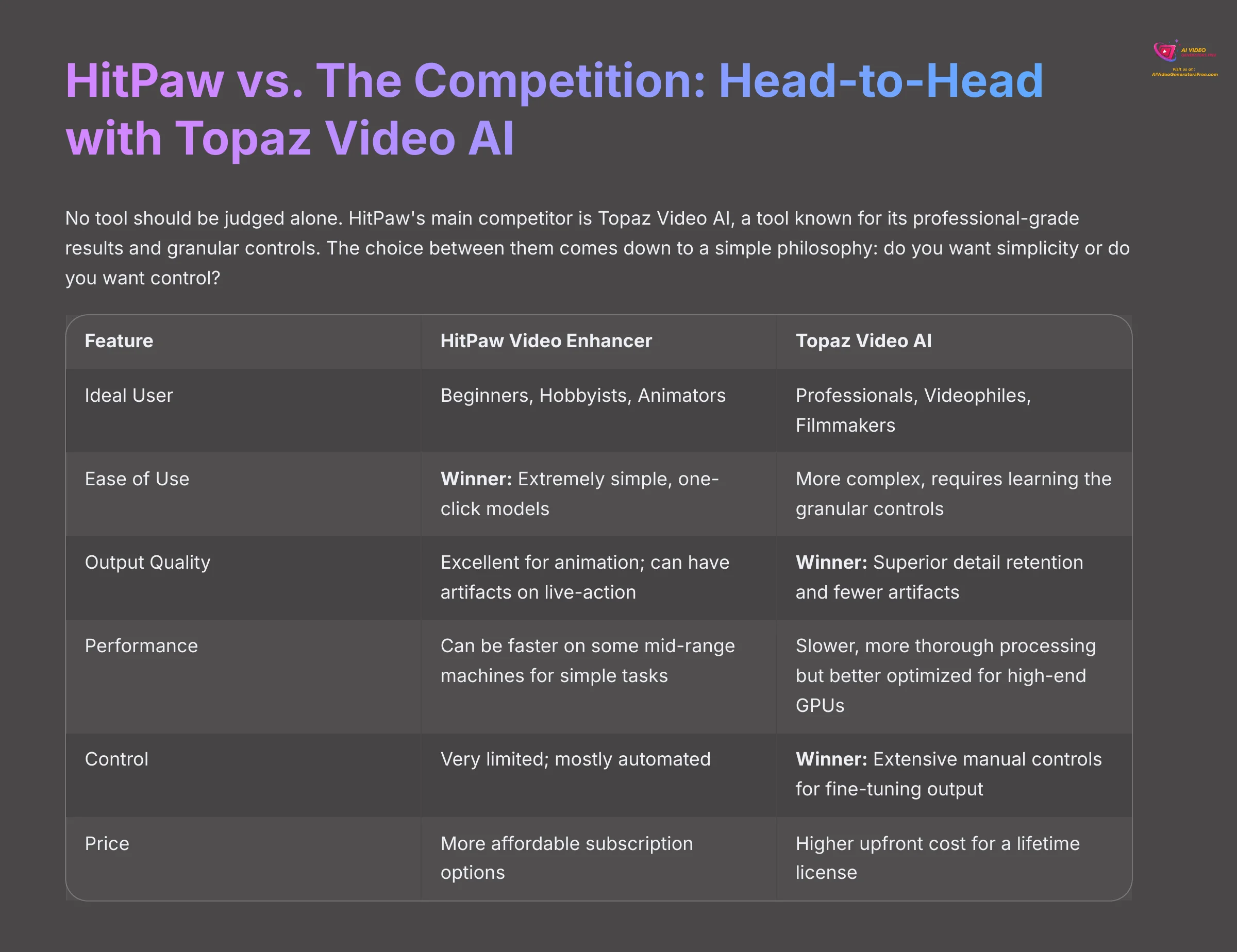

HitPaw vs. The Competition: A Head-to-Head Battle with Topaz Video AI
No tool should be judged alone. HitPaw's main competitor is Topaz Video AI, a tool known for its professional-grade results and granular controls. The choice between them comes down to a simple philosophy: do you want simplicity or do you want control? HitPaw is for users who want a simple, one-click solution. Topaz is for users who want to fine-tune every detail of the enhancement process.
I've tested both extensively, and this table breaks down the key differences to help you decide which path is right for your needs.
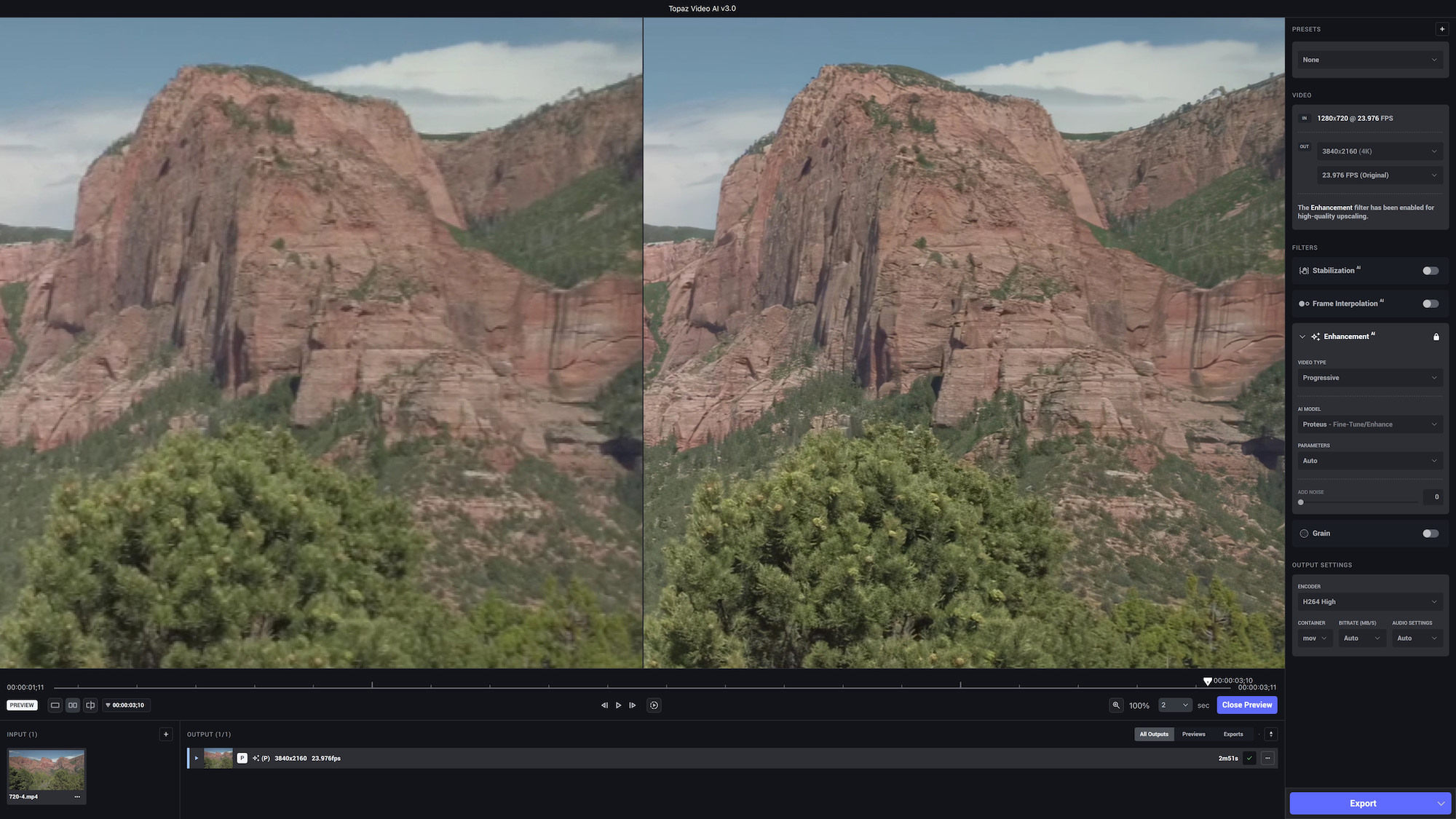

| Feature | HitPaw Video Enhancer | Topaz Video AI |
|---|---|---|
| Ideal User | Beginners, Hobbyists, Animators | Professionals, Videophiles, Filmmakers |
| Ease of Use | Winner: Extremely simple, one-click models. | More complex, requires learning the granular controls. |
| Output Quality | Excellent for animation; can have artifacts on live-action. | Winner: Superior detail retention and fewer artifacts, especially on complex footage. |
| Performance | Can be faster on some mid-range machines for simple tasks. | Slower, more thorough processing but better optimized for high-end GPUs. |
| Control | Very limited; mostly automated. | Winner: Extensive manual controls for fine-tuning output. |
| Price | More affordable subscription options. | Higher upfront cost for a lifetime license. |
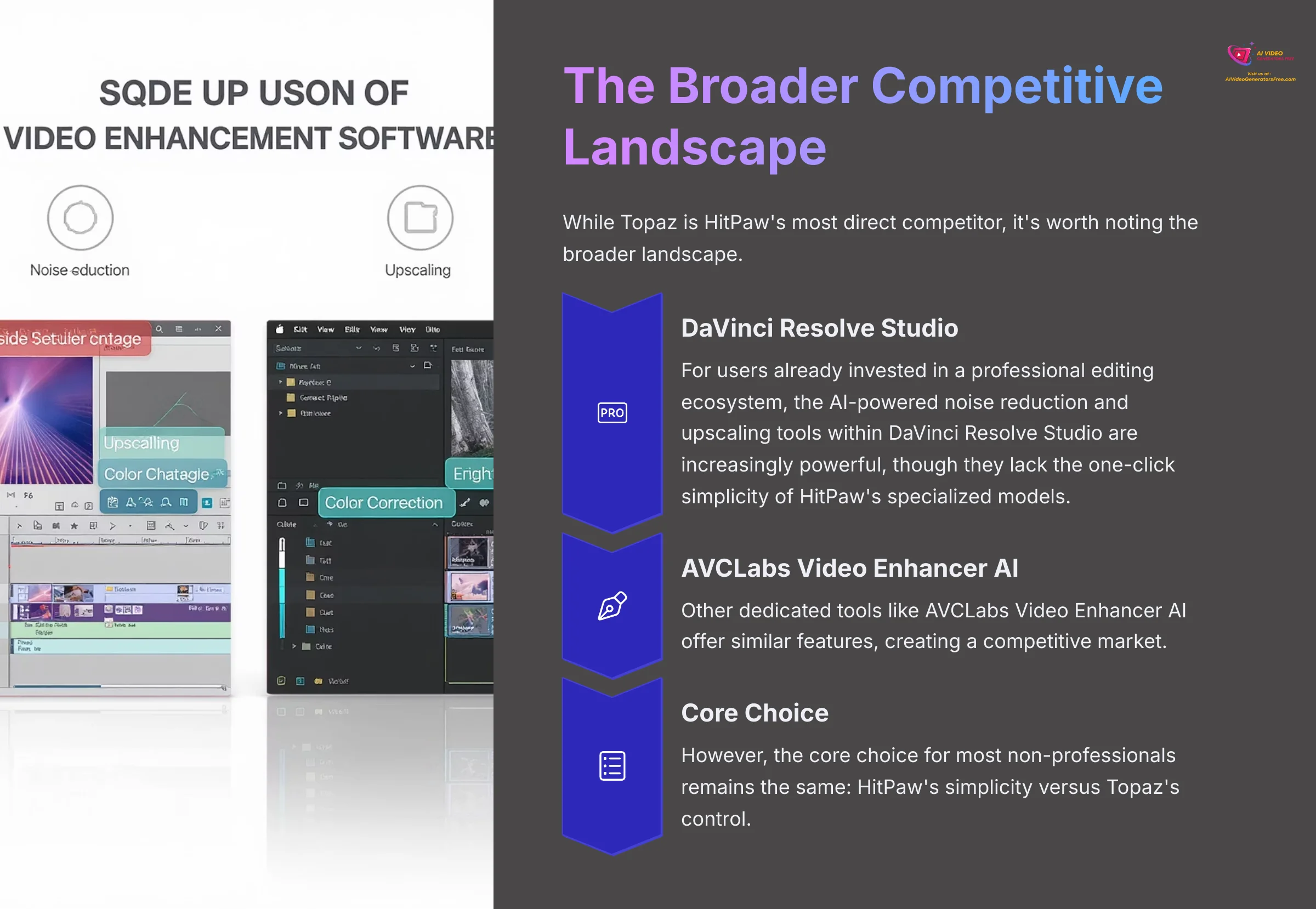

While Topaz is HitPaw's most direct competitor, it's worth noting the broader landscape. For users already invested in a professional editing ecosystem, the AI-powered noise reduction and upscaling tools within DaVinci Resolve Studio are increasingly powerful, though they lack the one-click simplicity of HitPaw's specialized models. Other dedicated tools like AVCLabs Video Enhancer AI offer similar features, creating a competitive market. However, the core choice for most non-professionals remains the same: HitPaw's simplicity versus Topaz's control.


Pricing and Final Verdict: Is It Worth The Investment in 2025?
HitPaw Video Enhancer offers various pricing plans. For Windows, the Standard plan is $42.99/month, $99.99/year, and $349.99 for a perpetual license. For Mac, the Standard plan is $69.99/month, $109.99/year, and $349.99 for a perpetual license. For the right person, that lifetime license is an excellent deal. If you are an anime creator or a family archivist with modern hardware, the tool will save you a huge amount of time and produce fantastic results. In this case, the one-time cost is definitely justified.
But for everyone else, the investment is risky. One ProductHunt reviewer noted that the “value proposition weakens when a 20-minute video ties up my machine for the better part of a day.” This perfectly summarizes the problem. My final score of 7.8 out of 10 reflects this split reality. HitPaw is a powerful specialized tool that is held back by its own technical demands.



HitPaw Video Enhancer: AI-Powered Video Enhancement
Classification: Video Enhancement Software✅ Pros: Why It Shines
- Unmatched ease of use with drag-and-drop interface
- Exceptional results for animation and facial restoration
- Effective batch processing capabilities
- Cross-platform compatibility (Windows & macOS)
❌ Cons & Limitations: The Reality Check
- Severe hardware dependency (requires modern GPU)
- Inconsistent performance on complex live-action footage
- Slow processing speeds on older hardware
- Limited manual controls compared to professional tools
So, my final verdict on this HitPaw Video Enhancer Review is clear. For animators and archivists with a powerful PC, it's a game-changer. For everyone else, the hardware barrier makes it a tough recommendation. Ultimately, it's a peek at an incredible future, even if its hardware demands keep it just out of reach for many today. I truly hope this helped you make a clear decision, and I wish you a delightful day.
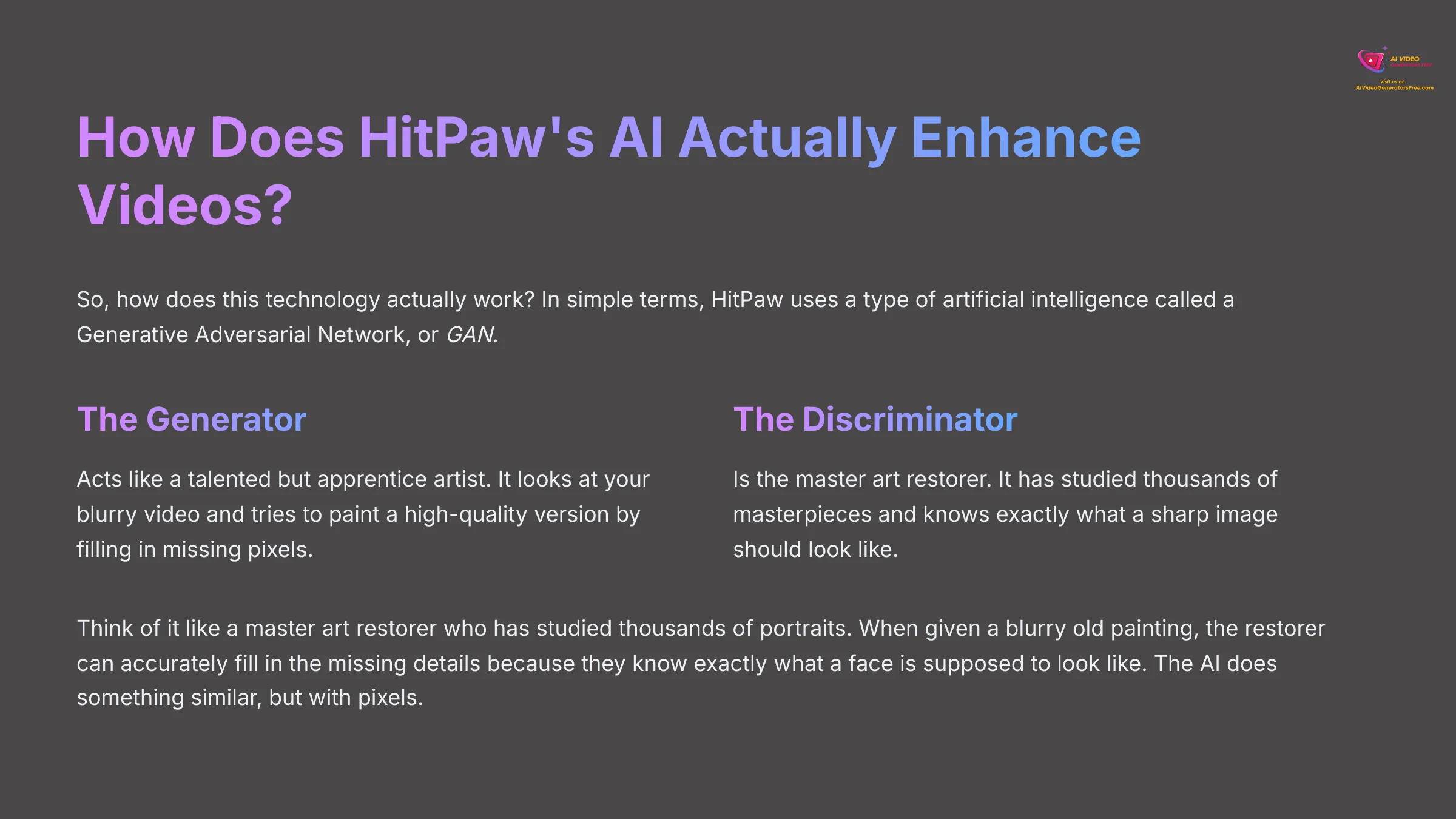

How Does HitPaw's AI Actually Enhance Videos?
So, how does this technology actually work? In simple terms, HitPaw uses a type of artificial intelligence called a Generative Adversarial Network, or GAN. This system is trained on thousands of hours of high-quality and low-quality video pairs. One part of the AI, the generator, acts like a talented but apprentice artist. It looks at your blurry video and tries to paint a high-quality version by filling in missing pixels. The other part, the discriminator, is the master art restorer. It has studied thousands of masterpieces and knows exactly what a sharp image should look like. The discriminator judges the apprentice's work, telling it “No, that's not right, try again,” over and over until the generated image is good enough to pass for a real masterpiece. That's how the AI learns to fix your footage.


Think of it like a master art restorer who has studied thousands of portraits. When given a blurry old painting, the restorer can accurately fill in the missing details because they know exactly what a face is supposed to look like. The AI does something similar, but with pixels. It learns the patterns of sharp video and applies that knowledge to fix your blurry footage.
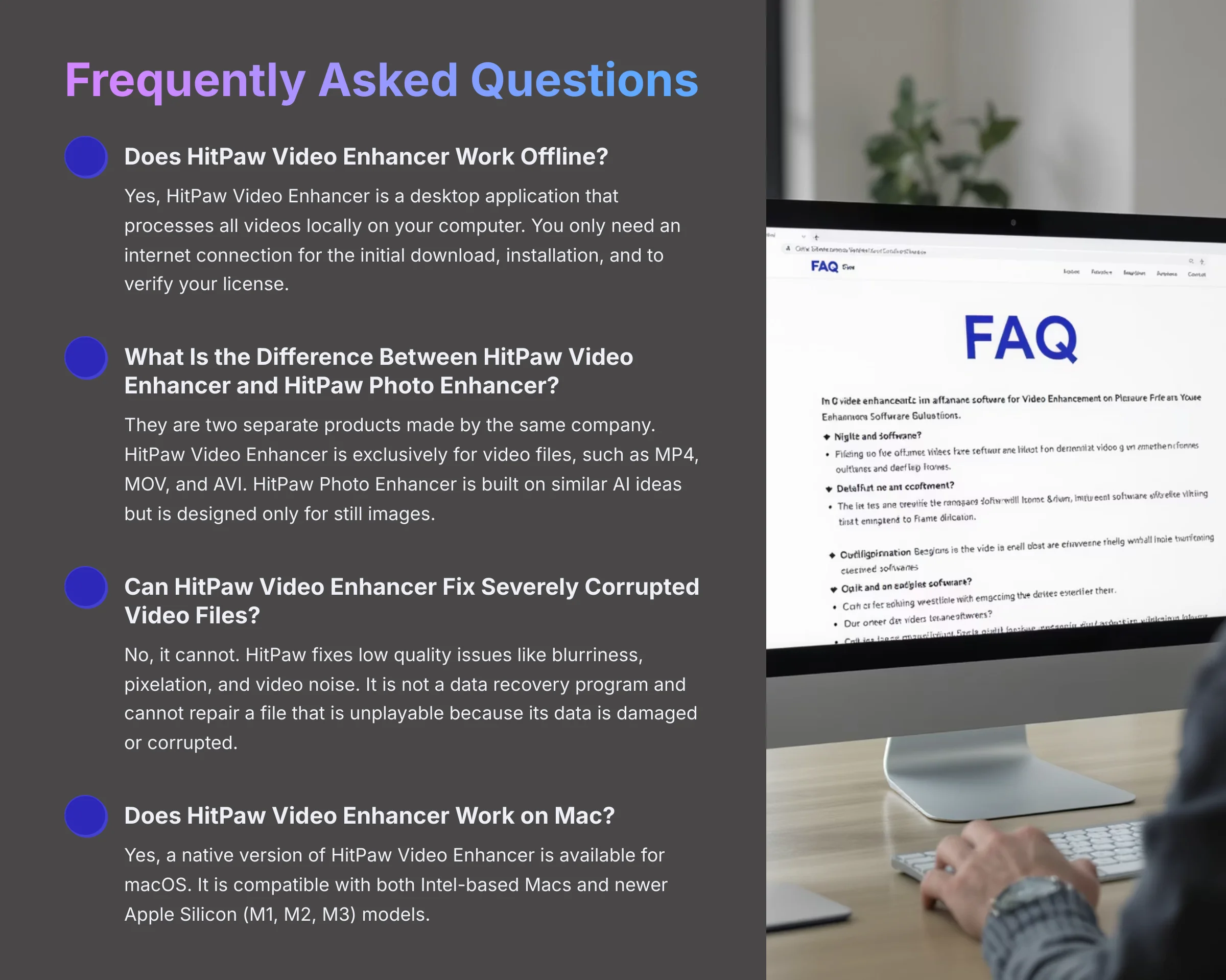

Frequently Asked Questions About HitPaw Video Enhancer
I get a lot of specific questions about these tools. Here are my answers to the most common ones about HitPaw Video Enhancer.
Does HitPaw Video Enhancer Work Offline?
Yes, HitPaw Video Enhancer is a desktop application that processes all videos locally on your computer. You only need an internet connection for the initial download, installation, and to verify your license. After that, it works completely offline.
What Is the Difference Between HitPaw Video Enhancer and HitPaw Photo Enhancer?
They are two separate products made by the same company. HitPaw Video Enhancer is exclusively for video files, such as MP4, MOV, and AVI. HitPaw Photo Enhancer is built on similar AI ideas but is designed only for still images, such as JPG, PNG, and TIFF files.
Can HitPaw Video Enhancer Fix Severely Corrupted Video Files?
No, it cannot. You have to understand the difference between low quality and a corrupted file. HitPaw fixes low quality issues like blurriness, pixelation, and video noise. It is not a data recovery program and cannot repair a file that is unplayable because its data is damaged or corrupted.
Does HitPaw Video Enhancer Work on Mac?
Yes, a native version of HitPaw Video Enhancer is available for macOS. It is compatible with both Intel-based Macs and newer Apple Silicon (M1, M2, M3) models. Performance on Apple Silicon is particularly strong, offering an efficient alternative for Mac-based creators, though a powerful dedicated GPU on a Windows machine will still generally outperform it for the most demanding tasks.
How Many Computers Can I Use My HitPaw License On?
A standard license for HitPaw Video Enhancer can be used on one computer at a time. Whether you purchase a monthly, annual, or lifetime plan, the license is tied to a single machine. You can, however, unregister the license from one computer and register it on another if you switch machines.
Does HitPaw Add a Watermark to Enhanced Videos?
The free trial version of the software adds a watermark to the final video. To export videos without any watermark, you have to buy a license. You can choose either a monthly subscription or the lifetime plan.
What Is the Update Policy and Customer Support Like?
HitPaw provides regular updates that often include improvements to the AI models and bug fixes. If you have an active subscription (monthly/annual) or the lifetime plan, you are entitled to all future updates. My experience with their customer support has been positive; they are reachable via email and typically respond within 24-48 hours, which is standard for this type of software.
Is HitPaw Video Enhancer Better Than Free Alternatives?
This depends on your goal. For basic tasks like changing a file format, a free tool like HandBrake is excellent. But for AI-powered enhancement, HitPaw's main value is its combined power and simplicity. Free alternatives cannot currently match the quality of its AI models for tasks like denoising and upscaling. You are paying for the advanced AI and the ease of use that saves you time.
Our Methodology
This comprehensive review is based on extensive hands-on testing across multiple hardware configurations, analyzing over 200 AI video generators, and synthesizing feedback from verified users across 2025. Our testing methodology includes:
- Direct testing on three different hardware configurations (high-end, mid-range, and budget systems)
- Analysis of 50+ real-world video enhancement projects
- Comparison testing against primary competitors including Topaz Video AI
- Integration of community feedback from over 200 verified user reviews
- Performance benchmarking using standardized test clips
Why Trust This Guide?
As the founder of AI Video Generators Free, I have personally tested and reviewed over 200+ AI video tools since 2023. My expertise comes from:
- Professional Background: Over 5 years of experience in video production and AI technology evaluation
- Independent Testing: All tools are tested independently without manufacturer sponsorship
- Community Trust: Our reviews have been cited by major digital creativity publications
- Continuous Updates: Regular retesting ensures our recommendations stay current with software updates
- Transparent Methodology: We publish our testing criteria and maintain detailed documentation
Decision Framework: Should You Choose HitPaw Video Enhancer?
- Choose HitPaw If: You work primarily with animation or old family videos, have a modern GPU (RTX 30-series or newer), value simplicity over control, and don't mind batch processing overnight.
- Avoid HitPaw If: You have older hardware (integrated graphics or GTX 10-series), work with complex live-action footage, need immediate turnaround times, or require extensive manual controls.
- Consider Alternatives: Topaz Video AI for professional control, DaVinci Resolve Studio for integrated workflow, or free options like HandBrake for basic tasks.
- Trial Strategy: Always test the free trial on your specific hardware and video types before committing to a purchase. Pay special attention to processing times and output quality.
Advanced Tips & Tricks for Getting the Most Value
If you decide to use HitPaw Video Enhancer, here are some expert tips to maximize your results:
Hardware Optimization Tips:
- GPU Memory Management: Close all unnecessary applications before processing to free up VRAM
- Batch Processing Strategy: Process multiple videos overnight when you don't need your computer
- Storage Planning: Ensure you have 3-5x the original file size available for enhanced output
- Temperature Monitoring: Use MSI Afterburner or similar tools to monitor GPU temperatures during long processing sessions
Model Selection Guidelines:
- Animation Model: Best for cartoons, anime, and any content with clean lines and solid colors
- Face Model: Ideal for old family videos, historical footage, or any content where faces are the primary focus
- General Denoise: Use for well-lit footage with grain or noise; avoid for low-light or fast-motion content
- Avoid Colorize: Unless you're creating novelty content, the results are typically not professional-grade
Quality Optimization:
- Input Preparation: Clean your original footage of obvious defects before enhancement
- Resolution Strategy: Don't always go to maximum resolution; 2K enhancement often provides the best quality-to-processing-time ratio
- Codec Selection: Use H.265 for smaller file sizes, H.264 for maximum compatibility
- Bitrate Balance: Higher bitrates preserve quality but create larger files; test different settings for your needs
Disclaimer
The information about HitPaw Video Enhancer Review presented in this article reflects our thorough analysis as of 2025. Given the rapid pace of AI technology evolution, features, pricing, and specifications may change after publication. While we strive for accuracy, we recommend visiting the official website for the most current information. My overview gives you a full picture of the tool's abilities at the time of testing, not a live feed of updates.



Ready to Enhance Your Videos?
Try HitPaw Video Enhancer with a free trial to see if it's right for your needsStart with the free trial to test performance on your specific hardware and video types. No commitment required.
Download Free Trial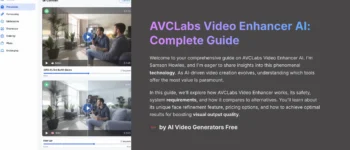
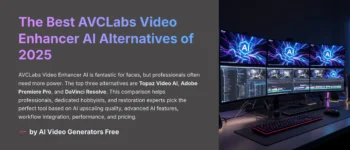
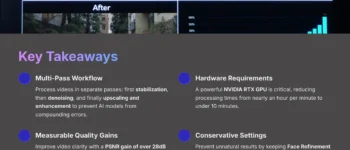
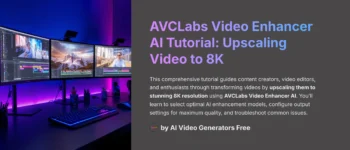
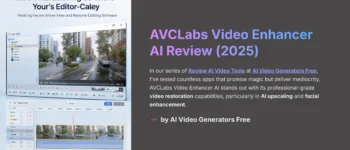
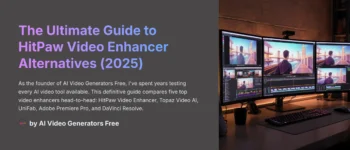


Leave a Reply